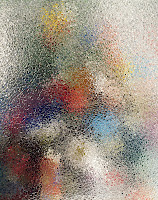Thursday entry: Plasticity of Plausibility
In an art history class, we watched “Un Chien Andalou,” a film directed by Luis Buñuel. A Spanish surrealist and filmmaker, he collaborated with Salvador Dali in creating a visual field of dreams, which transformed into a very strange movie. The plot is disjointed and stumbles around with scenes that appear to stream subconsciously. Aside from the handful of formal similarities that exist between cuts, they are barely related when it comes to content, which makes it difficult for the viewer to process. After the shot with ants crawling out of a hole in someone’s hand, an anonymous armpit is exposed and also a sea urchin. It is as if the images were generated from complete randomness; and where memories and familiarity may be absent, the succession of these disturbing portraits stimulates some sort of thought.
The film is roughly 16 minutes in length, but within that time of being exposed to a number of mini spectacles, it was as if I became slightly desensitized to the experience of bewilderment: I started to accept the bizarre and have no expectations for understanding what was to come. To realize this effect was a delight, and I think I enjoy the decision in refusing to pacify the viewer. This work as a film, cohesive in its rejection of consistency, really pushes and bullies the conventions of its class. I would like my portraits to move in that direction by finding support through this dissociation of elements; it almost appears as controlled randomness. Using titles for each portrait will provide limbs to complete the work but not necessarily operate as the main tool for identification.
http://www.jstor.org.proxy.library.vcu.edu/stable/1225059?seq=1&Search=yes&term=bunuel&term=luis&list=hide&searchUri=%2Faction%2FdoBasicSearch%3FQuery%3Dluis%2Bbunuel%26x%3D6%26y%3D13%26wc%3Don&item=12&ttl=435&returnArticleService=showArticle&resultsServiceName=doBasicResultsFromArticle
The film is roughly 16 minutes in length, but within that time of being exposed to a number of mini spectacles, it was as if I became slightly desensitized to the experience of bewilderment: I started to accept the bizarre and have no expectations for understanding what was to come. To realize this effect was a delight, and I think I enjoy the decision in refusing to pacify the viewer. This work as a film, cohesive in its rejection of consistency, really pushes and bullies the conventions of its class. I would like my portraits to move in that direction by finding support through this dissociation of elements; it almost appears as controlled randomness. Using titles for each portrait will provide limbs to complete the work but not necessarily operate as the main tool for identification.
http://www.jstor.org.proxy.library.vcu.edu/stable/1225059?seq=1&Search=yes&term=bunuel&term=luis&list=hide&searchUri=%2Faction%2FdoBasicSearch%3FQuery%3Dluis%2Bbunuel%26x%3D6%26y%3D13%26wc%3Don&item=12&ttl=435&returnArticleService=showArticle&resultsServiceName=doBasicResultsFromArticle

Comments
Post a Comment